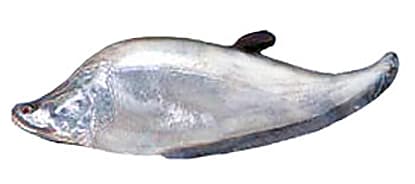Giant Featherback – Chitala lopis – Thai Fish Specise
Species: Chitala lopis.
Common names: Giant Featherback, Indonesian Featherback, Black Featherback and Knifefish. Thai Name: Pla Satu.
Distribution: Native to freshwater habitats in Southeast Asia. Particularly in countries such as Thailand, Cambodia, Borneo, Malay Peninsula, Sumatra and Java in Indonesia and Vietnam.
Habitat: Their natural habitat includes a variety of aquatic environments within this region. Found in slow-moving rivers and streams with dense vegetation along the banks. They prefer areas with submerged or overhanging plants that provide shelter and hiding places. These features provide them opportunities to ambush prey. They can also be found in freshwater lakes, particularly those with calm waters and abundant vegetation. These lakes might include oxbow lakes, floodplain lakes, and reservoirs.
During the rainy season, when waters rise and flood terrestrial habitats, they can move into temporarily flooded areas. This adaptive behavior allows them to access new feeding grounds and breeding opportunities. They can inhabit swamps and marshes with slow-moving water and ample vegetation. These environments offer both food sources and hiding spots. In some regions, Giant Featherback can be found in agricultural landscapes, including ponds and rice fields. Additionally, the ability of Giant Featherback to move short distances on land enables them to navigate between different water bodies during seasonal changes or in search of new feeding areas.
 Giant Featherback (Chitala lopis)
Giant Featherback (Chitala lopis)
Are a member of the Notopteridae species (meaning “back fin”). Featherback are a family of bony tongues (Osteoglossiformes). The bony tongues are a primitive but highly successful family of fish which have been on earth for 200 million years or more. Their shape gives them their common name Knifefish.
With the denotation of “knifefish” the Notopteridae should not be confused with Gymnotiformes, the electric knifefish. Although their manner of swimming is similar, the two groups are not closely related. The name is from the Greek noton meaning “back” and pteron meaning “fin”. They have slender, elongated, bodies, which giving them a knife-like appearance, their body is silver to bronze with a dark or brown back, long brown caudal fin and a silvery white belly. The caudal fin is small and fused with the anal fin, which runs most of the length of the body. Where present, the dorsal fin is small and narrow, giving rise to the common name of “Featherback”. The fish swims by holding its body rigid and rippling the anal fin to propel itself forward or backwards.
The Notopterids species have specialized swim bladders, its organ extends throughout the body and even into the fins in some cases, although the swim bladder is not highly vascularized. It can absorb oxygen from air and can produce sound; by squeezing air through a narrow passage into the pharynx.
Lifespan and Size
In the wild, Giant Featherback generally have a lifespan of around 8 to 10 years, although some individuals might live longer if conditions are favorable. In captivity, the lifespan can be influenced by factors such as tank size, water quality, diet, and overall care. When kept in a well-maintained and appropriate aquarium environment, they might live anywhere from 10 to 15 years or possibly longer. The Giant Featherback is known for its impressive size, and it can grow quite large under the right conditions. In the wild. They can be up to about 25 kg. (55lbs.) and 1.5 m. in length, the world record is 9.8 kg (21,5lbs)
Diet
Giant Featherback are known for their unique hunting technique. They use their elongated bodies and rapid movements to ambush and capture their prey. Their long anal fin, which resembles a feather, provides them with efficient propulsion and maneuverability in the water. They are a carnivorous predator that feeds on a variety of small aquatic animals found in their natural habitat. Their diet consists of live prey that they can catch and consume. Fish make up a significant portion of the diet. They feed on smaller fish species like small minnows, fry, and juvenile fish of various species.
The diet also includes a range of aquatic insects such as aquatic beetles, dragonfly nymphs, water bugs, and other small insects. Crustaceans like small shrimp and crayfish are also part of their diet. These provide a source of protein and nutrients. Giant Featherback also feed on tadpoles and other amphibian larvae. Various aquatic invertebrates like worms, snails, and other small creatures that are part of the underwater ecosystem. It’s important to note that the availability of prey items in their natural habitat can vary seasonally and depending on the specific ecosystem. Their adaptability to different food sources contributes to their survival in various environments.
Giant Featherback Breeding Timeline
Giant Featherback breed during the rainy season, which can vary depending on their geographic location within their native range in Southeast Asia. The increased water levels and changes in environmental conditions during the rainy season trigger breeding behavior. During the breeding season, Giant Featherbacks engage in courtship behavior. This can involve displays of fin flaring, swimming in pairs, and possibly even jumping out of the water. Males and females come together for spawning, they prepare a nest, during which the female releases her eggs, after which the male fertilizes them externally and both parents guard the eggs until they hatch.
The fertilized eggs are typically adhesive and might get attached to submerged vegetation, branches, or other underwater structures. The attachment helps protect the eggs from being swept away by the current. The eggs hatch after a certain period, which can vary based on water temperature and other environmental factors. The exact duration of egg incubation in the wild is not well-documented. Once the eggs hatch, the larvae (baby fish) are fragile and require suitable conditions to survive. They feed on microscopic organisms and gradually grow. As the larvae grow, they enter the juvenile stage and develop their characteristic appearance. They continue to feed on small aquatic animals as they mature.
Gender
Determining the gender of a Giant Featherback can be difficult, especially when the fish are young. As they mature, certain physical and behavioral differences become more apparent, but even then, it might not always be straightforward. In some cases, males have larger and slimmer bodies, compared to females. During the spawning period, females have a more rounded abdomen. However, this difference might not be very pronounced, and relying solely on this characteristic might not always be accurate. Some experienced aquarists and breeders claim that mature males might have slightly more elongated anal fins compared to females. However, this distinction might be subtle and could vary among individual fish.
Fishing method
Fishing for Giant Featherback can be a challenging and rewarding experience due to their unique behavior and habitat preferences. They are often more active during low-light periods, such as dawn and dusk. Fishing during these times increases your chances of success. They are carnivorous predators, so live bait is often the most effective choice. Small fish, shrimp, or other aquatic creatures that are part of their natural diet can be used as bait. When fishing with live bait, allow the bait to swim naturally, and be prepared for sudden strikes.
If live bait is not feasible, you might try using artificial lures that mimic the movement of small fish or insects. Soft plastics jigs, and crankbaits, use a slow and steady retrieve to mimic the movement of prey. But it’s important to note that featherback might not always respond well to artificial lures.


 Giant Featherback (Chitala lopis)
Giant Featherback (Chitala lopis)